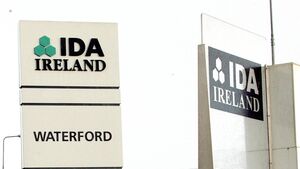Waterford sees less than 4 per cent of IDA visits

IDA visits are designed to attract foreign investment into a region and create new jobs. Photo, Joe Evans.
Less than 4 per cent of all international IDA visits in 2024 were to Waterford, with nearly half of all visits being to the Capital.
Of the 466 foreign direct investment (FDI) visits organised by the Industrial Development Agency in 2024, just 18 were to Waterford or 3.86 pe rcent of the 466 total IDA visits.
This puts Ireland’s fifth-largest city significantly behind other large urban centres when it comes to visits by foreign investors. Dublin received more than 12 times the number of site visits last year, having 221 unique visits from potential investors.
Following Dublin, there was a significant drop off to just 41 visits to Cork, 38 to Limerick, and 21 to Clare. Waterford was tied with Westmeath having seen just 18 site visits in the period.
Over the past three years, Waterford’s share of the 1,416 IDA visits, which are designed to attract foreign investment into a region and create new jobs, drops down to just 3.4 per cent, with 48 investment visits.
The Minister for Enterprise, Trade and Employment, Peter Burke TD, for Longford-Westmeath, responded to a parliamentary question from Deputy Malcolm Byrne on the number of visits and that “IDA site visits are only one measure of a company’s interest in a particular location and may not necessarily be a true measure of the overall level of foreign direct investment (FDI) activity in a region or county.”
The Minister said that “70 per cent of FDI won by IDA Ireland in 2024 came from its existing client base, rather than new companies” and that “potential clients visiting Ireland may visit more than one county and may return to a location more than once".
Despite these clarifications, the Minister did note that “regular engagement and collaboration with stakeholders are important in positioning any regional location to attract FDI” as competition for investment opportunities “continues to intensify as countries increase their focus on self-sufficiency and economic security.”






